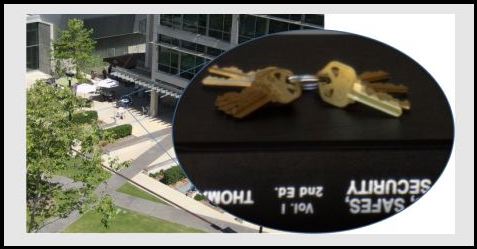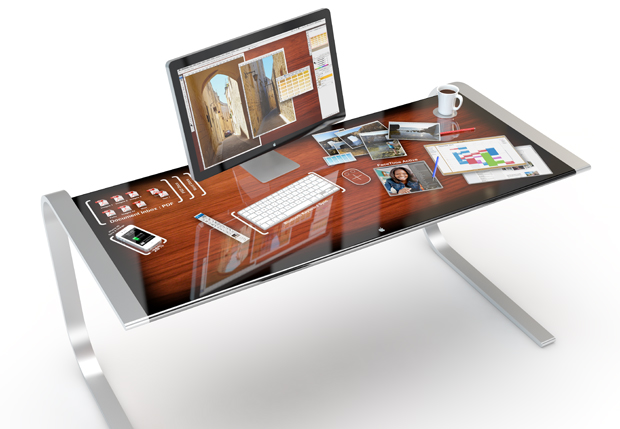Sold by weight. Not volume.
Category Archives: tech
SneaKey

Back in 2008, Benjamin Laxton and Kai Wang at UCSD’s computer vision lab came up with SneaKey, a method to duplicate keys simply by imaging them. Reading the paper, SneaKey is a MatLab app that takes in an image of a key, along with certain control points identified by a human operator. The image of the key is then warped to a known configuration and the depth of the cuts on the key are estimated. They tested on sets of keys from two different manufactures, KwikSet and Schlage. While both could be decoded in a handful of attempts, the KwikSet keys were easier to guess, both in number of attempts and wider viewing angles. I would think it has to do with the handle part of the KwikSet keys having a large number of easy to identify control points, while the Schlage has comparatively fewer control points, but that’s just a guess. Schlage keys aren’t shown in the figures, so that’s just a guess. The authors do say that they believe that correct placement of the control points is critical to identifying the correct baseline in order to properly estimate the biting codes.
iDesk

Mac|Life’s concept iDesk seems plausible and very expensive. In their concept, Mac|Life images a desk with a multitouch display and bluetooth connectivity. Phones, laptops, and other devices when placed on the desk can have their data accessed and transferred though on desk icons.
It’s a striking design, having your desk be one giant interactive flat panel display. The technology to do this certainly seems ready. Giant retina displays, and multitouch controls exist. (Well retina displays exist, scaling them up to 6 feet by 4 feet, maybe not.) The real problem seems to be more of software rather than hardware. You don’t even really need one display like that. Simply more intuitive graphical and tactile syncing with current separate displays would be nice. I imagine transferring documents from desktop or laptop computer to a tablet by touching the screen displaying the document with spread open fingertips, making a fist (think grabbing) and then touching the screen of the destination device. Of course thinking of local device storage is so 20th century. Everything is going cloud with continuous syncing.
More Microbrial Home

After coming across the Bio-Light, I felt I needed to highlight a few other projects in Philips’s Microbrial Home.
According to Philips, the centerpiece of the home is a kitchen island with an integrated bioreactor. The digester is connected to the garbage disposal so that decaying plant and animal matter can be fed to bacteria that then produces methane which is then burned for fuel. It’s an interesting idea, but I find it hard to believe that the the amount of energy created from the scraped plates of a few dinners could actually do anything useful, certainly not anything that could noticeably effect the power demands of the home.
The main purpose of the bioreactor – besides fueling the Bio-Light – is to power the the dining table. An herb garden grows above a table that has integrated terra cotta evaporation coolers. What’s the methane for, apparently to warm the tabletop. Strange I know. Still, the table does look pretty striking with plants and the storage.
Bio-Light

Part of Philips’s Microbial Home concept, the Bio-Light is a group glass vessels containing a bioluminescent bacteria. The bacteria is suspended in a nutrient bath that is provided from either a biodigester, or just a boring old tank.
Seeing the photos of the lamp, I wondered how much light was actually generated. I still don’t know. I don’t expect the Bio-Light to be useful to read by or anything, but I would expect it to be bright enough to be obviously glowing even in a room that’s moderately lit. Looking into bioluminescent kits, the bacteria in the lamp might be vibrio fischeri. Bacteria isn’t a bad choice for bioluminescent lamps since unlike diatoms, they glow continuously, as opposed to only when disturbed. Another possibility would be to use fungi like armillariella mellea (aka foxfire), but from what I’ve read most fungi are very dim. Mycena chlorophos might be a bit brighter, but Im having problems finding where to purchase it. Personally, I’d feel better having a bunch of mushrooms on my wall rather than bacteria.
Plant-In City

Designed by Huy Bui, Jon Schramm of HB Collaborative and Carlo Gómez de Llarena have designed a set of interlocking cedar boxes to create an automated terrarium. Called Plant-In City, they are currently running a Kickstarter Campaign to gather funding to finish prototypes and to ramp up production.
The system consists of three different cedar frames. The main frame is the “light frame”, and features LEDs mounted along the top rectangle. A “soil” frame a simple box that contains dirt along with sensors to monitor light, humidity and moisture. The last frame is the “water frame” and it is made up of a water tank along with tubing and a solenoid valve to control water flow. The sensors, lights, and valves are connected to an arduino that wirelessly connects to the Internet. Through either the Plant-It City website or mobile app, owners can monitor and control their frames via cosm.com‘s API. The sensors not only alert the owner to changes in the terrarium, but also are used to drive an audio and visual effects for in-person visitors of the system.
Stay Classy Microsoft

Apparently wanting to appeal to brogrammers, Microsoft presented the “Meet Azure” dance show for this year’s Norwegian Developers’ Conference party. That would be raising booth babes to another level, but what really takes the cake of course are the lyrics [Ed. Note: coloring original].
The words “micro” and “soft” don’t refer to my penis (or vagina)
Classy. Way to be inclusive there Microsoft. They way you slipped in “or my vagina” in parentheses and then wrote it in girly pink was magnifique! Not only do girls like pink, and like talking about genitals in public, but society especially like vaginas that are described as large and hard.
Kudos, my man. Kudos.
Sorry About the IPO
“Don’t Worry. Your Data is Safe.”

I took my laptop to the Apple Store to get it repaired. (The keyboard doesn’t work.) After explaining to the guy at the store, he starts taking down my contact info. When he’s done, he says. “And what’s your username and password? Don’t worry. Your data is safe.”
Aghast, I say “But my data is NOT safe if I give you my password!*”
“Uhh….”
“Can’t you just boot off an external drive or something?”
“Well, umm… yeah, but this is how that prefer we do it.”
Sure enough, the Apple form has blanks for username and password.
In the end, I gave them Ming’s password, because really it didn’t matter. I was giving a perfect stranger an unencrypted drive. It does make me think though. After decades of telling users not to share they’re passwords. Not to give them to people saying they’re from IT. Not to trust anyone with your password, Apple is undoing this as part of standard operating procedure. Or maybe I’m just old, and I’m supposed to think of Apple as a parent.â€
* Yes, I recognized the naivete of believing a simple password provided adequate security in this situation.
†My parents never read my stuff. I see no reason to read my child’s.
BestCast™

After years of development, Weather Underground replaces NWS forecasts with their own prediction algorithm that incorporates tens of thousands of personal weather stations – like my dad’s – into its forecasts. The algorithm is called BestCast™. The press release talks about 42,000 stations, but I suspect that actual number is a bit less. Wunderground came up with this figuring by summing the total number of stations from each of three different data sets, however a number of stations actually send data to many different sources. For example, thanks to wview, my dad’s station sends to directly to Weather Underground and to the National Weather Service’s MADIS program via CWOP.
Another thing that’s new on wunderground.com (or at least I never paid much attention to it before) is if you scroll down to the “Forecast” section for a location they publish the RMSE for this location both their forecast and the NWS forecast. As a data guy, I find that transparency absolutely wonderful. Also, they link to the predicted hour-by-hour weather for a location (I suspect this is using an NWS model, since it’s reporting for an airport.), and the NWS’s “Area forecast discussion”, which is a conversational and wonky forecast. Personally, I like how it discusses how different models agree or disagree.
